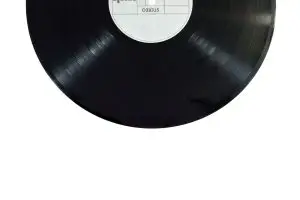Curating playlists may sound like a foreign term, but you have probably done it many times. It is the process of selecting your preferred songs from a library and arranging them in batches so that you can access them easily. Of course, the main benefit is that you get to play the songs in the order created, so you don’t have to keep going back to your computer to select another one of your favorite tracks.
Why Do You Need Playlists in the First Place?
Two decades ago, the concept of a playlist would only have been relevant to a DJ or radio producer. For you, the everyday radio listener, you simply listened to what was played, whether you enjoyed it or not. Now, many years later, with huge advancements in the audio streaming space, you can choose what you listen to. You can decide when and how to listen to it.
Digital platforms like Spotify and SoundCloud put in front of you thousands of songs to choose from. There are so many options; it can get overwhelming. You feel like you are swimming in a sea of songs, some you love, some you can’t stand, and everything in between.
It gives you control
Playlists are the only way to achieve a sense of control over what you listen to and prevent you from being overwhelmed. Curating playlists is an involving but very rewarding process. However, you do require a level of technique to come up with a perfect playlist.
Here are some tips to keep in mind when you embark on the process. These apply whether you are curating playlists for yourself (and perhaps a few close friends) or to garner an audience in the form of followers on platforms such as Spotify.
Establish a Theme
Even before you sample the first song, you need to be clear on the theme you are going for. Without this, it remains a random collection of songs, making it no different from the hundreds of songs you come across when you log on.
The theme is the mood the songs are intended to create (and maintain) and goes hand in hand to make the playlist.
Theme and purpose go hand in hand
For running, you need upbeat songs in your ear from start to finish to energize you through the workout session. Pieces on a playlist to soothe you to sleep after a long day definitely won’t be appropriate on a workout playlist and vice versa. If you study better with music, you may create a playlist with tracks that enable you to block out the world around you and focus.
When choosing a theme, there are no rules, especially if it’s a personal playlist. You can have a ‘loving self’ playlist, a nostalgia playlist, or a heartbreak one. Anything goes.
Name the Playlist
There is more to a name than you may think. You need to assign it some sort of identity to tell it apart from others. It is also best to include in the name some description that says something about its theme.
For instance, the description ‘Rise and Shine’ after the name of a playlist tells you it contains upbeat songs best for a lively, energetic morning.
If you are hoping to grow your followers on a digital platform like Spotify, the need for an appealing name is essential. There are so many playlists with boring generic names. If yours is to get people’s attention, you will need a catchy, creative name.
Pick a name and stick to it
This is especially important when you want your playlist on Spotify or another platform to gain a following. Changing the name may work against you because already gained followers may not be able to find you. A name change alters search results, so fans may not find you even when searching for you.
Profile Picture and bio
Profile picture
If yours is purely for personal use, this may not be much of an issue. If you are curating playlists for Spotify, you must carefully consider your profile picture and bio.
As expected, funny, unique pictures always get you more followers. There are many websites with free images, so you don’t have to worry about rights issues. Also,there are many websites that you can use to create or edit pictures. There is no excuse for a dull, uncreative playlist image.
Playlist Bio
Don’t forget to include a playlist bio. It not only adds to the creative identity of the list but also helps with search results. A creative biography contains unique keywords which will be easily picked out when people search for the playlist. It is also a good idea to include some artists whose songs are included in the list. Whenever people search for an artist, your playlist will come up as part of the results.
The First Track is Key
After you have established a theme and gathered tracks to include in your playlist, you need to put a lot of thought into track number one. Just like in a movie where the first few minutes could make or break it, or an article where the first paragraph determines if people read on or not.
The first track is the opener. It establishes the selected theme. It gives the listener a glimpse into the rest of the list and tells them what to expect. An opener should be attention-grabbing enough to make people look forward to song number 2 even before number 1 finishes.
Make Use of the ‘Flight’ Structure
A great playlist is not just made of a collection of themed songs arranged in random order. There is a lot of thought that goes into the order of the selected pieces. We have already talked about putting the most thought into the opening track. With that in place, move on to the rest.
Order the songs like a flight. After an airplane takes off, it stays in the air for a while and is lowered gradually before it lands. Figure out which songs fit best on the ‘taking off’ section after the opening track. Which ones work best in the middle, and which ones serve best as concluding tracks. Once that is done, it is a matter of joining the dots to create an amazingly sequenced playlist.
Break Monotony
With a theme comes an element of predictability. Sometimes it is a collection of the same tracks used in other similarly-themed playlists. It always helps to give your audience a bit of a surprise. It could be by including one or two great songs that come close but are not perfect for the theme.
New hits or old gems
Alternatively, you can choose to adhere strictly to the theme but include new songs, surprising your audience with something they have probably never heard before.
Another way to surprise your listeners is to include a song that is just the opposite of new. Dig up an old gem from the archives that were a hit back then and fit into the playlist’s theme. How many times have you been at a bar, and a favorite song from years ago comes on?
Make Frequent Updates But with Caution
Yes, it is a good idea to update your playlists often. Some say a monthly update is best to ensure it doesn’t get boring.
Avoid Drastic Changes
The word of caution when curating playlists is that you shouldn’t make drastic changes at once. If yours is on Spotify, the reason it gained a following is that people enjoy the compilation. Sudden extreme changes to a playlist essentially change the collection, which often leads to a decline in followers.
Pull out and replace only a few songs and retain the rest. Try moving the same tracks around to maintain the same pieces but in a revised order for a freshened feel.
If you remove and add only a few songs with each update, the playlist does change over time, but followers never feel it. They evolve with it.
How Many Songs in a Playlist?
How many are too many, and how few is too few. There is no specific answer because the number of tracks in a playlist could range from 20 songs to a lengthy 200-song compilation.
How do you know when to stop? Experts advise basing your number on the target audience. Real music lovers won’t mind 200 songs on a playlist. On the other hand, casual listeners may be put off by a long playlist and prefer one with between 20 and 50 songs.
Seek Feedback
Feedback from friends is necessary when curating playlists as part of a strategy to grow your numbers. Just like a great writer would find value in having a few friends go through his script before releasing it into the world, you can do the same with your music sequence.
Have a few friends who you know share the same taste in music check it out. They are bound to give you a few ideas from their playlists on what to add and perhaps what may be better off left out entirely. You will be surprised how much richer your sequence can get with just a few suggestions here and there from friends.
Be Patient
If you are making playlists with the main aim being to gather followers on digital platforms, don’t be in a hurry to achieve this goal. It takes months, perhaps years, to grow from no followers to thousands. It also takes work because you have to keep things fresh and look for relevant new releases to add on.
Have Fun!
Making playlists should be fun. Even if you are a DJ or radio music producer with this as part of your job description, it shouldn’t feel like a chore. Take it as a musical canvas, and each song added is another stroke of the paintbrush. The result is a beautiful work of art your audience will love to listen to.
The best part about this work of art is that you can always come back and erase a few details and add on others to create a new piece.
Bottom Line
Curating Playlists is an artistic process. What this confirms is that no playlist you can consider perfect by all. It depends on the intended audience and their musical tastes and preferences. A great pop music playlist will be far from being the perfect playlist for a rock music lover.
A perfect playlist also has a lot to do with the listener’s mood at the time. The same individual will enjoy a loud, upbeat batch in the morning and appreciate a slow, mellow one at the end of a busy day. When you embark on curating a playlist, allow yourself to focus on and enjoy the process rather than producing a perfect playlist.






